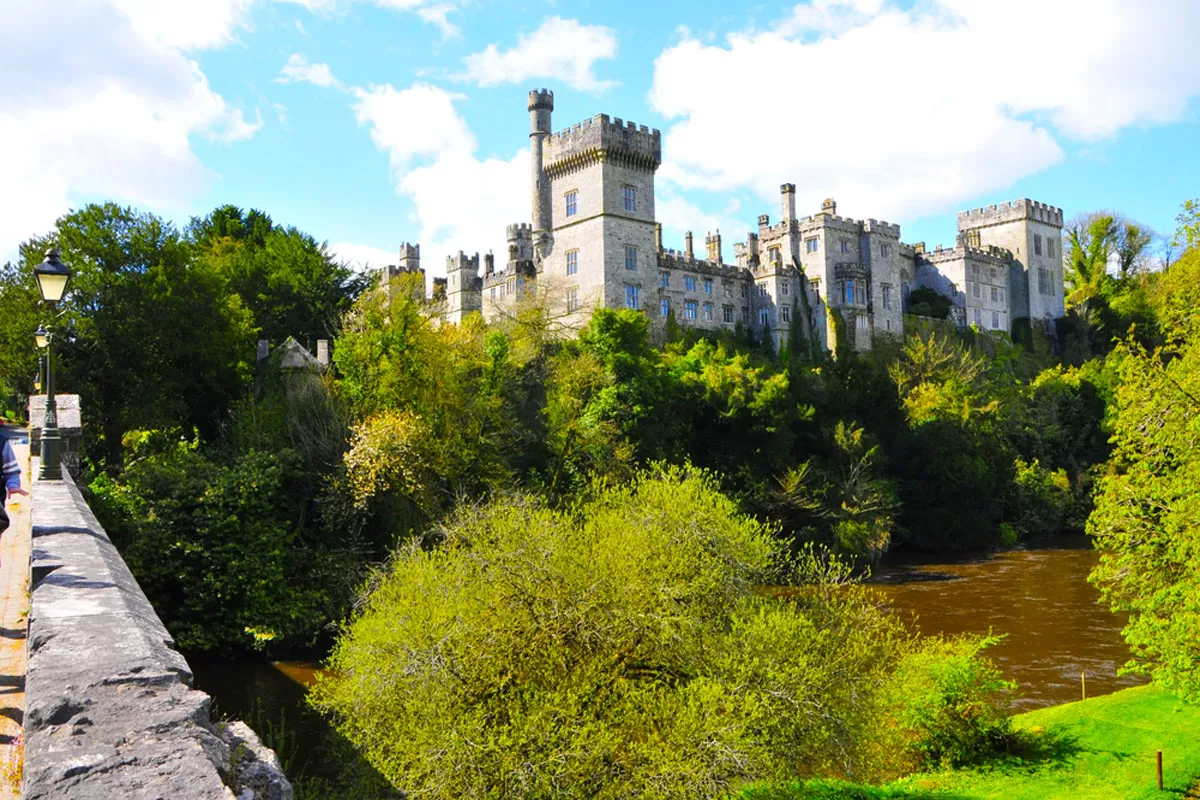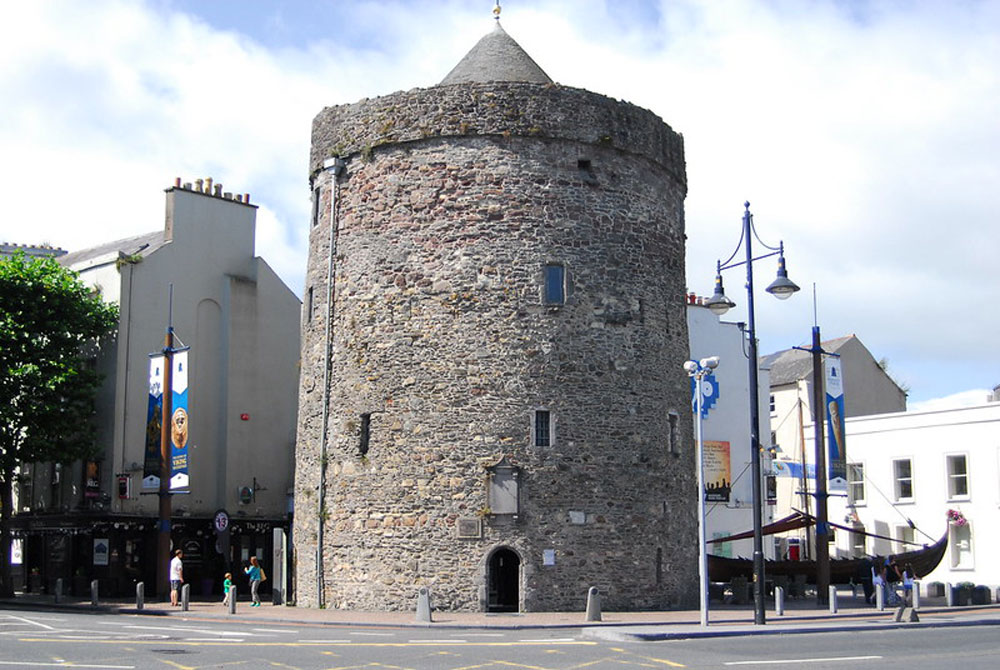The History of Lismore Castle and Its Gardens
Lismore Castle, nestled in the heart of County Waterford, stands as a symbol of Ireland’s rich history and architectural grandeur. Built in 1185 by Prince John, later King John of England, the castle has a storied past, serving as a fortress, a residence for noble families, and a cultural hub. While the castle itself is a breathtaking sight, its gardens are equally renowned for their beauty and historical significance.
The gardens at Lismore Castle have evolved over centuries, reflecting the tastes and influences of those who called the castle home. The first formal gardens were laid out in the 17th century, with significant expansion and redesign occurring in the 19th century under the ownership of the Duke of Devonshire. These gardens have witnessed generations of care and innovation, blending traditional Irish landscaping with European garden design.
Today, Lismore Castle Gardens are split into two distinct sections: the Upper Garden and the Lower Garden. Each offers a unique perspective on garden design and showcases a variety of plants, flowers, and architectural features that add to the overall splendor of the grounds.
The Upper Garden – A Formal Masterpiece
The Upper Garden of Lismore Castle is a testament to formal garden design, with roots tracing back to the 17th century. Originally created as a walled garden, this area was once used to grow fruit and vegetables for the castle’s residents. Over time, the Upper Garden has been transformed into a beautifully curated space, blending order with nature’s beauty.
At the heart of the Upper Garden are its structured lawns and neatly arranged flowerbeds, which frame the castle’s dramatic backdrop. As you walk through this garden, you’ll be greeted by meticulously maintained paths and manicured hedges that guide your way. The garden’s symmetrical layout reflects the formality typical of traditional European gardens, and its design has remained faithful to its origins, despite modern updates.
One of the most striking features of the Upper Garden is its ancient yew trees, some of which have stood for centuries, their gnarled trunks adding a sense of history and permanence to the landscape. The garden is also home to various sculptures and stone fountains, lending an air of timeless elegance.
In spring and summer, the garden bursts into life with colorful displays of roses, herbaceous borders, and ornamental plants. The views from the Upper Garden are equally impressive, offering a panoramic vista of the castle’s towers and the surrounding countryside, making it a perfect spot to take in both the natural beauty and architectural majesty of Lismore Castle.
The Lower Garden – A Natural and Wild Escape
While the Upper Garden at Lismore Castle exudes formal elegance, the Lower Garden offers a striking contrast with its more informal and naturalistic design. This part of the estate is often described as wild and free-flowing, providing visitors with a peaceful and serene escape that feels closer to nature.
The Lower Garden, developed during the 19th century, is designed to harmonize with the landscape rather than dominate it. Here, pathways wind through lush greenery, towering trees, and vibrant seasonal plantings, giving the garden an organic feel. Unlike the structured lines of the Upper Garden, the Lower Garden encourages exploration and discovery, inviting visitors to wander through its shaded glades and meandering trails.
One of the key features of the Lower Garden is the variety of mature trees, including majestic beech, oak, and sycamore, some of which have stood for over a century. These towering trees create a natural canopy that provides cool, shaded areas perfect for quiet reflection.
The Lower Garden is also known for its colorful collection of rhododendrons and azaleas, which bloom in the spring, painting the garden with hues of pink, purple, and white. The flowers’ beauty is enhanced by the garden’s slightly wild character, creating a romantic, almost untamed atmosphere.
Throughout the Lower Garden, there are hidden spots to enjoy, including tranquil water features, small ponds, and secluded seating areas where visitors can rest and take in the natural surroundings. This garden represents the perfect blend of wildness and beauty, offering a more relaxed and intimate connection to nature compared to the formal Upper Garden.

Seasonal Highlights – The Changing Beauty of Lismore Gardens
One of the most enchanting aspects of Lismore Castle Gardens is how they transform throughout the year. Each season brings its own unique display, ensuring that no two visits are ever quite the same. Whether you’re wandering the structured elegance of the Upper Garden or exploring the natural beauty of the Lower Garden, the seasonal shifts in color, texture, and fragrance make these gardens a year-round destination.
Spring: A Burst of Color
Spring at Lismore Castle Gardens is a time of renewal. The gardens come alive with vibrant displays of daffodils, tulips, and primroses, offering a burst of color against the backdrop of lush greenery. The rhododendrons and azaleas in the Lower Garden bloom in spectacular fashion, their bright pinks, purples, and whites contrasting with the fresh green of the trees. Ancient yew trees in the Upper Garden also begin to sprout new growth, while cherry blossoms provide delicate pink hues across the landscape.
Summer: Full Bloom
By summer, the gardens are at their peak. The Upper Garden’s formal beds are filled with fragrant roses, lavender, and herbaceous borders brimming with blooms. This is the time to experience the garden in full color, with towering foxgloves and vibrant peonies adding to the tapestry. In the Lower Garden, towering trees provide cool shade, while the winding paths offer refuge from the summer heat. The gentle sound of water features and the rustle of leaves make the garden a serene escape during the warmer months.
Autumn: A Rich Tapestry of Foliage
Autumn brings a different kind of magic to Lismore Castle Gardens. The trees in both the Upper and Lower Gardens transform into a rich tapestry of golds, reds, and oranges. The beech and oak trees in the Lower Garden are particularly stunning during this time, their leaves turning fiery hues before gently falling to carpet the ground. Autumn also showcases the garden’s changing textures, with grasses and seed heads creating a softer, more natural appearance. The castle’s ancient walls and statues take on a timeless quality, framed by the season’s warm colors.
Winter: A Quiet Elegance
In winter, the gardens offer a quieter beauty. Though the flowers may have faded, the structure of the garden stands strong. The skeletal branches of the trees, the evergreens, and the frosty lawns create a stark but beautiful landscape. The yew trees in the Upper Garden remain a constant presence, their dark green foliage adding contrast against the wintry scene. Even in its most subdued state, the gardens retain their charm, with frosty mornings and the low winter sun casting long shadows that enhance the sense of timelessness.
Whether visiting in spring for the floral displays or in autumn for the breathtaking foliage, Lismore Castle Gardens provide a dynamic and ever-changing experience for nature lovers and garden enthusiasts alike.
A Cultural Hub – Events, Exhibitions, and Creative Spaces
Beyond their natural beauty, the Lismore Castle Gardens serve as a vibrant cultural hub, hosting various events, exhibitions, and activities that draw visitors from all over the world. From art installations to seasonal festivals, the gardens are more than just a place to admire nature—they are also a source of creative inspiration and community engagement.
1. Art Exhibitions at Lismore Castle Arts
One of the standout features of Lismore Castle is its commitment to contemporary art. The castle grounds are home to Lismore Castle Arts, a prestigious gallery that showcases world-class exhibitions from leading artists. The gallery is located within the walls of the castle, and the gardens often serve as an extension of the exhibitions, with sculptures and installations displayed throughout the outdoor space. These exhibitions bring a modern dimension to the historic setting, offering a unique juxtaposition of contemporary art and ancient architecture.
Throughout the year, Lismore Castle Arts hosts a range of temporary exhibitions that appeal to art lovers, while the outdoor sculptures scattered across the gardens provide moments of reflection as visitors move through the different spaces. This blending of art and nature makes the gardens not only a visual delight but also a place of intellectual and artistic engagement.
2. Seasonal Festivals and Garden Events
Lismore Castle Gardens also play host to seasonal festivals and events that celebrate the natural world. During the spring and summer months, the gardens come alive with garden tours, plant sales, and horticultural workshops. These events are perfect for garden enthusiasts who want to learn more about the art of landscaping and plant care, with experts on hand to share their knowledge.
In autumn, harvest festivals often take place, celebrating the changing seasons and the abundance of the garden’s produce. These events are family-friendly and offer activities such as apple picking, pumpkin carving, and traditional Irish music, making them popular for locals and tourists alike.
3. Outdoor Theatre and Music Performances
The picturesque setting of Lismore Castle Gardens makes it an ideal venue for outdoor performances. Throughout the summer, the gardens are transformed into open-air theatres, with Shakespearean plays, classical concerts, and local musical performances taking center stage. The castle’s dramatic backdrop and the natural acoustics of the garden provide a magical atmosphere for these cultural events. Visitors can bring picnics, blankets, and settle in for an evening of entertainment surrounded by the beauty of the gardens.
4. Educational Programs and Garden Walks
For those looking to deepen their understanding of gardening and horticulture, Lismore Castle offers a variety of educational programs. Guided garden walks, led by experienced horticulturists, provide insight into the history of the garden’s design, the plants that thrive in Ireland’s climate, and sustainable gardening practices. These walks are informative and interactive, offering visitors the chance to ask questions and learn more about the intricate work that goes into maintaining the gardens.
Additionally, the gardens often host children’s educational programs, aimed at teaching younger generations about nature, plant life, and the environment. These hands-on workshops encourage creativity and environmental stewardship, making them a great family activity.
5. A Place for Reflection and Creativity
Ultimately, the Lismore Castle Gardens are not only a place of historical and natural significance but also a source of inspiration for artists, writers, and thinkers. The serene and contemplative environment has drawn creatives for centuries, and today, the gardens continue to be a space where visitors can find peace, inspiration, and a connection to both the past and the present.
In conclusion, the Lismore Castle Gardens offer much more than just scenic views. They are a living, evolving space where nature, art, and culture converge. Whether you’re visiting for the flowers, the exhibitions, or the performances, there’s always something new to discover within these magnificent gardens surrounding a historic castle.
Natural Wonders
- The Giant’s Causeway – A UNESCO World Heritage Site featuring unique hexagonal basalt columns.
- Carrick-a-Rede Rope Bridge – A thrilling rope bridge linking the mainland to a small island.
- Cushendun Caves – Stunning caves featured in Game of Thrones.
- Glens of Antrim – A series of nine beautiful glens offering breathtaking scenery and walking trails.
- Fair Head – A dramatic cliff with incredible views, popular for hiking and rock climbing.
Castles and Historic Sites
- Dunluce Castle – A medieval castle perched on a dramatic cliff overlooking the sea.
- Carrickfergus Castle – A well-preserved Norman castle dating back to the 12th century.
- Shane’s Castle – A historic estate with a ruined castle and stunning grounds.
Coastal Attractions
- The Dark Hedges – A hauntingly beautiful avenue of beech trees featured in Game of Thrones.
- Ballycastle Beach – A scenic spot for relaxation and views of Rathlin Island.
- White Park Bay – A picturesque beach with stunning coastal views.
Islands and Marine Attractions
- Rathlin Island – Known for its wildlife, seabird colonies, and the Rathlin West Light Seabird Centre.
- Ballintoy Harbour – A charming harbor and filming location for Game of Thrones.
Museums and Cultural Sites
- Ulster Folk and Transport Museum – Showcasing traditional Irish heritage and transportation history.
- Belfast Lough – Known for maritime heritage, including the Titanic Quarter.
Scenic Drives and Routes
- Causeway Coastal Route – A stunning drive featuring some of Northern Ireland’s most iconic attractions.
- Slemish Mountain – Said to be the first home of Saint Patrick in Ireland, popular for hiking.
Unique Experiences
- Old Bushmills Distillery – One of the oldest whiskey distilleries in the world, offering tours and tastings.
- Glenarm Castle and Gardens – A stunning estate with historic gardens and seasonal events.
These attractions make County Antrim a must-visit destination for nature lovers, history buffs, and adventure seekers alike.
Helpful Resources








